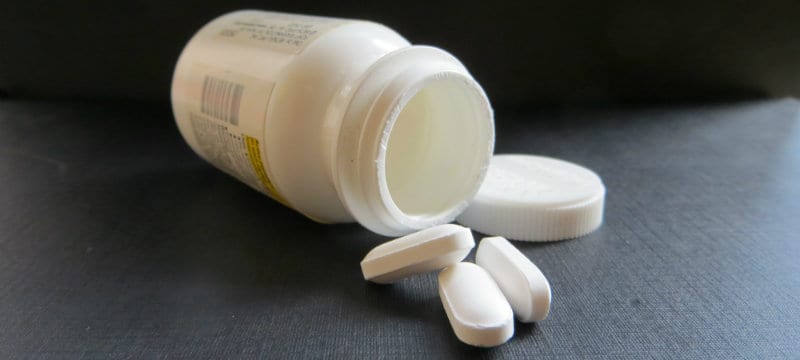By Mark Huffman MD, MPH
 The World Health Organization (WHO) published its first Model List of Essential Medicines in 1977 to “assist Member States in formulating national drug policies” (http://www.who.int/medicines/publications/essentialmedicines/en/). Access to essential medicines is part of the right to the health, which was a founding principle in the WHO Constitution (1946). Specific principles regarding access to essential medicines were outlined in the Constitution’s General Comments 14 (2000), which highlighted accessibility, availability, appropriateness and quality assurance of goods and services such as essential medicines. This focus also appeared in the Millennium Development Goals (MDG 8.E: in cooperation with pharmaceutical companies, provide access to affordable essential medicines in developing countries). National formularies are frequently based on the WHO Model List of Essential Medicines, and when countries such as India (which uses the Model List as a guide) propose free access to medicines at public health facilities, the Model List’s relevance increases considerably.
The World Health Organization (WHO) published its first Model List of Essential Medicines in 1977 to “assist Member States in formulating national drug policies” (http://www.who.int/medicines/publications/essentialmedicines/en/). Access to essential medicines is part of the right to the health, which was a founding principle in the WHO Constitution (1946). Specific principles regarding access to essential medicines were outlined in the Constitution’s General Comments 14 (2000), which highlighted accessibility, availability, appropriateness and quality assurance of goods and services such as essential medicines. This focus also appeared in the Millennium Development Goals (MDG 8.E: in cooperation with pharmaceutical companies, provide access to affordable essential medicines in developing countries). National formularies are frequently based on the WHO Model List of Essential Medicines, and when countries such as India (which uses the Model List as a guide) propose free access to medicines at public health facilities, the Model List’s relevance increases considerably.
The most recent version of the Model List—its 18th revision—was published online in July 2013; it included more than 350 different medicines. Revisions are based upon voluntary, open applications to add, withdraw, or change the list by organizations such as Universities Allied for Essential Medicines (UAEM; essentialmedicines.org), which is a group of university students that aims to leverage the positions of universities to increase access to public goods. The WHO received 52 applications for the 2013 Model List, and:
- Approved the addition of 17 new medicines
- Approved the deletion of 1 medicine
- Approved new indications for 3 medicines
- Approved the addition of a new dosage form/strength for 4 medicines
- Rejected 9 applications and deferred a decision on 2 medicines
Executive Summary: WHO Model List
Debate persists about the right balance of which drugs should be considered “essential,” but most experts agree that such medicines should address an important public health problem; should be effective, safe, and cost-effective; and should be widely available. The Model List includes “core” and “complementary” medicines, the latter of which includes medicines for priority diseases or for drugs that require special monitoring.
This debate came to my attention after I joined the Young Professionals’ Chronic Disease Network (ypchronic.org; ncdfree.org), an advocacy organization that began as a Google group of 12 people in 2008 and now includes over 2,000 members in more than 100 countries. I originally became involved with YP-CDN because of my interest in global cardiovascular research; through the organization, I met Sandeep Kishore, who was also a board member of UAEM. As a medical student, Sandeep successfully petitioned the WHO to add simvastatin, a member of a class of drugs known as statins, which lower cholesterol and decrease the risk of heart attacks and strokes, to the Model List for the prevention and control of cardiovascular disease. This success occurred in 2009; no statin had previously been included on the list. In 2011, Sandeep participated in the application to change the model beta-blocker (a class of drugs used to lower blood pressure and protect the heart) from atenolol to bisoprolol due to the more favorable risk/benefit profile of bisoprolol. I recently joined these efforts to expand the indication of spironolactone to include heart failure in the 2013 Model List, working with team members from Northwestern (cardiology fellow Amisha Patel), Mount Sinai School of Medicine (cardiology faculty Rajesh Vedanthan; medical students Alex Peters and Evan Blank; global health administrator Claire Hutchinson), and Cornell (medical student, Sandeep Kishore).
Application Process
Discussions of potential cardiovascular medicines to petition began in early 2012 and included the addition of clopidogrel, an antiplatelet medication used for heart attacks that came off patent in 2011; changing the model statin from simvastatin to atorvastatin (given the risk of myopathy associated with higher doses of simvastatin and because atorvastatin also came off patent in 2011); and expanding the indication of spironolactone from end-stage liver disease to include heart failure with left ventricular systolic dysfunction. We first approached Dr. Marcus Reidenberg, a professor of pharmacology at the Weill School of Medicine at Cornell who has served on the Expert Committee on the Selection and Use of Essential Medicines for the WHO, and who had assisted Sandeep in prior applications. Dr. Reidenberg suggested that we pursue the petition for spironolactone, as clopidogrel represented a second antiplatelet agent (aspirin being the first) and because atorvastatin was not perceived as providing a substantial improvement over simvastatin.
We began by dividing up the application, with the medical students taking the lead on most sections (even while they were intermittently working on away rotations in sites with spotty web access such as Mozambique). Sections included Public Health Relevance, Summary of Comparative Effectiveness, and Cost Effectiveness, among others. Drafts were uploaded onto DropBox, and monthly conference calls helped us review our progress and identify areas of additional work. Some sections such as “Summary Of Comparative Effectiveness in A Variety Of Clinical Settings” and “Summary Of Comparative Effectiveness on Safety” were relatively straightforward to write and edit, whereas other sections such as “International Availability” and “Summary of Regulatory Status” required help from organizations such as Health Alliance International, which maintains a Database on Medicine Prices, Availability, Affordability and Price Components (http://www.haiweb.org/MedPriceDatabase/).
After receiving feedback and letters of support from four external reviewers, including our special consultant, Dr. Reidenberg, we submitted our petition to the WHO ahead of the December 1, 2012 deadline. Two reviewers from the WHO Model List of Essential Medicines committee reviewed our proposal in winter 2013, the committee met in April 2013, and our application was accepted and published as part of the 18th Model List of Essential Medicines in July 2013.
Conclusions
We understand the limitations of the Model List; in fact, a 2010 analysis of the Millennium Development Goals found that only 35% of essential medicines are available in the public sector and only 63% are available in the private sector. However, we believe that this activity nonetheless represents a tangible step to improve global access to health. As countries like Brazil, Mexico, and India provide or seek to provide universal health coverage, including access to essential medicines, we argue that our efforts can help improve such access. Our team looks forward to ongoing applications in an effort to improve subsequent editions of the Model List.
About the Author
Mark Huffman MD, MPH is a cardiologist interested in global cardiovascular health, epidemiology, outcomes, and prevention research, particularly in India. Like the World Health Organization (WHO), he believes that access to essential medicines is a human right and has begun contributing to the WHO’s Model List of Essential Medicines as a way to improve that access. His efforts have focused on those medicines used for cardiovascular disease prevention and control.

